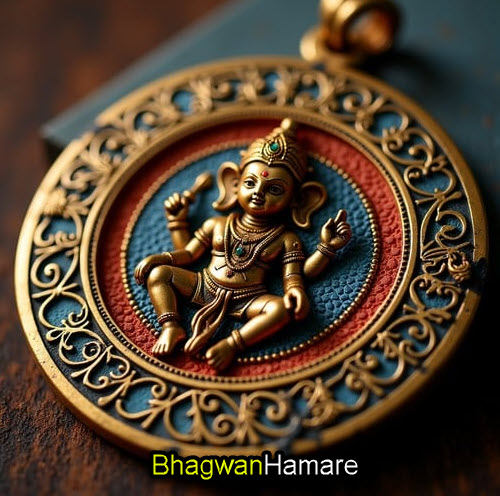🌌 The First Mundaka:
Decoding Ancient Wisdom for Modern Seekers 🔍
The first Mundaka of the Mundaka Upanishad is a spiritual
atom bomb—a compact yet explosive treatise on the nature of knowledge, reality,
and liberation. Structured as a dialogue between the sage Angiras and the
seeker Saunaka, it dismantles illusions about worldly pursuits and reveals the
path to absolute truth (Brahman). Here’s a breakdown of its narrative,
symbolism, and modern relevance:
---
### 1. The Lineage of Wisdom: How Divine Knowledge Flows
The chapter opens with a sacred genealogy of Brahma-vidya
(knowledge of Brahman):
- Brahma (the creator) → Atharva (his eldest son) → Angira →
Satyavaha Bharadvaja → Angiras .
- Symbolism: This lineage underscores that true wisdom is
transmitted orally, from realized masters to worthy disciples—not through books
or rituals alone.
- Modern parallel: Like peer-reviewed science, Vedic
knowledge required validation by enlightened teachers to avoid distortion
.
Key Verse:
> "Brahmā devānām prathamaḥ sambabhūva... sa
brahma-vidyāṁ sarva-vidyā-pratiṣṭhām"
> (Brahma, the first among gods, taught the science of
Brahman—the foundation of all knowledge) .
---
### 2. The Two Knowledges: Para vs. Apara Vidya
Saunaka’s pivotal question—“What, when known, makes
everything else known?”—reveals a hierarchy of knowledge:
| Apara Vidya (Lower Knowledge) | Para Vidya (Higher
Knowledge) |
|----------------------------------|----------------------------------|
| Vedas, rituals, grammar, astronomy | Direct realization of
Brahman |
| Focuses on material gains (heaven, wealth) | Leads to liberation
(moksha) |
| Like "legs" (useful but not essential) | The
"head" (essential for true freedom)
|
Critique of Ritualism:
The text mocks blind ritualists as "fools staggering
like blind men led by the blind" . Modern equivalent? Chasing promotions
or likes while ignoring inner fulfillment.
Scientific Connection:
- Apara Vidya ≈ Empirical science (studying parts).
- Para Vidya ≈ Unified Field Theory (seeking the whole)
.
---
### 3. The Spider’s Web: Creation as Divine Emanation
A stunning metaphor describes creation:
> "As a spider spins its web, as plants sprout from
earth, as hair grows from skin—so the universe arises from Brahman."
Implications:
- Brahman is immanent AND transcendent—both the weaver and
the web.
- Modern physics echo: Quantum vacuum fluctuations mirror
this "emanation" concept .
Practice for Today:
Meditate on how your thoughts/actions are threads in
Brahman’s web. Are they weaving bondage or freedom?
---
### 4. The Fire Ritual Exposé: Why Sacrifices Fail
The text demolishes mechanical religiosity:
- Problem: Rituals like Agnihotra promise heaven but perpetuate
cycles of rebirth .
- Solution: "Knowledge alone liberates"—not rote
actions .
Modern Rituals?
- Checking phones obsessively ≈ Vedic sacrifices (temporary
dopamine vs. lasting joy).
- Antidote: Replace "doing" with "being"—silent
meditation over frantic productivity.
---
### 5. The Seeker’s Protocol: From Saunaka to Silicon Valley
Angiras prescribes a 4-step path for modern seekers:
1. Discernment (Viveka): Distractions (Netflix) vs. Dharma
(purpose).
2. Renunciation (Vairagya): Let go of "likes" as
Saunaka abandoned rituals.
3. Guru Guidance: Find a teacher beyond YouTube gurus .
4. Direct Experience: Not belief—but "knowing Brahman
as your own Self" .
Corporate Yoga:
Tech CEOs now study this Upanishad to balance innovation
with ethics (Para Vidya in boardrooms!) .
---
### Conclusion: Why This 2,500-Year-Old Text Still
Electrifies
The first Mundaka is a mirror:
- For materialists: It asks, "Why chase shadows when
the Light is within?"
- For scientists: It hints that consciousness precedes
matter.
- For seekers: It’s a roadmap from chaos to cosmos.
Final Challenge:
Next time you feel overwhelmed, whisper:
"Apara or Para? Am I feeding the body or the
soul?"
(🔥 Want the 3 mantras from
Mundaka that rewire subconscious patterns? [Click before Maya distracts you!])



